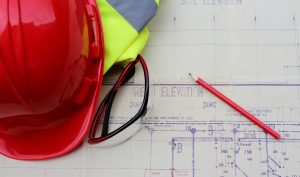CDM (Construction, Design and Management) also known as ‘CDM 4 Events’ is the regulations to which ‘space only’ exhibitors must comply.
SPACE ONLY EXHIBITORS – What you need to know about CDM…
The regulations cover the management of health, safety and welfare when carrying out construction projects. The regulations replace The Construction (Design and Management) Regulations 2007 (CDM 2007) and are applicable to event construction in addition to all existing relevant health and safety law which must also be complied with. Construction work includes, but is not limited to, the assembly or disassembly (e.g. phases within build-up and breakdown) of prefabricated elements to form a structure (e.g. shell scheme, features and space only stands). The regulations identify key roles (duty holders) who each have specific responsibilities (duties) to fulfil.
SHELL SCHEME EXHIBITORS: Unless you intend to construct (i.e. build) within your shell scheme these guidelines do not apply to you. Stand dressing, pop-ups, mounting posters, placing display cases, freestanding furniture etc. do not constitute construction.
UNDERSTANDING YOUR RESPONSIBILITIES
A space only exhibitor is likely to take the following role with the assigned responsibilities:
- Clients are the organisations or individuals for whom a construction project is carried out.
SUMMARY OF MAIN RESPONSIBILITIES
Make suitable arrangements for managing a project. This includes making sure:
- Robust coordination and cooperation between those involved.
- Other duty holders are appointed.
- Sufficient time and resources are allocated.
- Relevant pre-construction information is prepared and provided to other duty holders.
- The Principal Designer and Principal Contractor carry out their duties.
- Suitable welfare arrangements are in place.
Generally, each space only plot is treated as a separate construction site within the main construction site. The exhibitor assumes the role of Client for the plot they are hiring in which they will commission a construction project in the form of a stand. The exhibitor may appoint a Designer to design the stand (Principal Designer) and a stand build Contractor to build the stand (Principal Contractor) or a single company to provide both of these services and therefore assume both the roles of Principal Designer and Principal Contractor. Stand designers and builders should refer to the Contractor section for further guidance regarding their responsibilities under CDM 2015. Should the exhibitor choose not to appoint either a stand designer or stand builder to construct their space only stand then the roles and responsibilities of Principal Designer and Principal Contractor remain with the exhibitor to fulfil.
SKILLS, KNOWLEDGE AND EXPERIENCE
Anyone appointing designers (including Principal Designers), Contractors (including Principal Contractors) or workers must ensure that those appointed have the necessary skills, knowledge and experience.
When appointing stand designers and builders consideration should be given by space only stand holders to ensure that those who they are looking to appoint have the necessary skills, knowledge and experience.
NOTIFICATION
A project is notifiable to the relevant enforcing authority if the construction work is scheduled to:
- Last longer than 30 working days and have more than 20 workers working simultaneously at any point in the project – OR
- Exceed 500 person-days.
A project can be notified via the electronic F10 notification form on the HSE website. The requirements of CDM 2015 apply whether or not the project is notifiable. It is the Client’s responsibility to notify and subsequently display the notice however Clients can request someone else, such as the Principal Contractor, do either of these activities on their behalf.
Whilst it is very unlikely that a single space only stand will exceed either of the trigger points for notification, if a space only exhibitor suspects that the construction and deconstruction of their stand will do so then arrangements should be made for the project to be notified and the notice displayed.
CONSTRUCTION PHASE PLAN
This document sets out the arrangements for securing health and safety during the construction period. The arrangements include site rules taking into account the activities that will be taking place during the construction period. For projects involving more than one Contractor, a Principal Contractor is responsible for the Construction Phase Plan and site rules whereas for single Contractor projects this responsibility sits with a Contractor. (See also Induction and Site Rules)
It is likely that the stand builder will be allocated the role of Principal Contractor for a specific exhibitor’s space only stand and therefore will be responsible for producing the Construction Phase Plan and any specific site rules for the stand.
INDUCTION AND SITE RULES
A suitable site induction must be provided to any personnel requiring access to the construction site. The induction must be site-specific, highlight any particular risks and include information on the emergency procedures. Where there is more than one Contractor involved in a project the responsibility for ensuring an induction is provided rests with the Principal Contractor. (See also Construction Phase Plan)
Exhibitors are responsible for sharing any relevant information that they receive to any personnel that they invite onsite during the construction phase. In addition, if exhibitors of the space only stand intend to be present on the plot during the construction then they must receive the site-specific induction for the event as a whole and, if relevant, a site-specific induction for their space only plot. It may be the case that the stand builder simply adopts the organiser’s standard site rules and adds any of their own stand specific rules. The site rules for both the event as a whole and any specifically for the space only plot must be communicated to all personnel requiring access to the space only plot during the construction phase. If exhibitors of the space only stand intend to be present on the plot during the construction then the site rules must be adhered to.
WELFARE
Workers must be provided with suitable welfare facilities throughout the construction phase. Welfare facilities include, but are not limited to, drinking water, toilets, catering facilities and rest areas. Information regarding the location of the welfare facilities onsite should be disseminated.
It is likely that the venue will provide the welfare facilities and information regarding the available provision should be disseminated via the organiser. Exhibitors are responsible for sharing any relevant information that they receive to any personnel that they invite onsite during the construction phase.
ACCESS CONTROL
Reasonable steps must be taken to prevent access by unauthorised persons to areas where construction work is due to take place.
Exhibitors should take the time to understand the arrangements that will be in place to control access onsite as it is likely that passes/badges/wristbands etc. will need to be pre-ordered. Exhibitors are encouraged to disseminate any access information that they receive to any personnel that they invite onsite during the construction phase as this will speed up access.
CONSTRUCTION PHASE PLANS | RISK ASSESSMENTS | METHOD STATEMENTS
Construction Phase Plans, Risk Assessments and Method Statements are required by organisers in order to comply with the CDM 2007 regulations. These don’t require a legal expert and Parkes Display & Expo in “display & exhibiting made easy” can help you in preparing these compliance documents, to ensure a seamless expo experience. Call 01767 603930 or Enquire Here.








